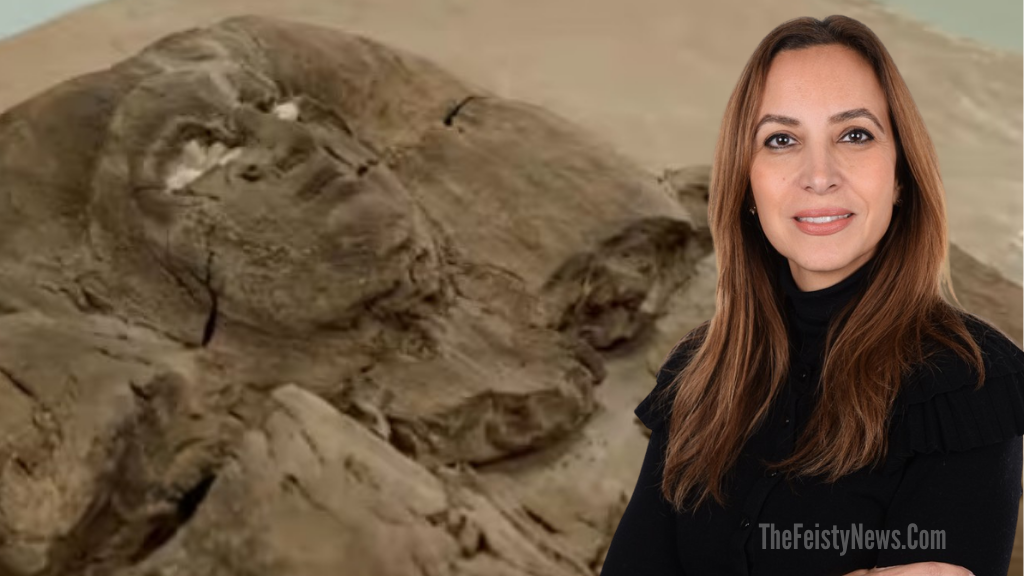Egyptologist Dr. Yasmin El Shazly and her team of archaeologists believe they had stumbled upon the tomb of a royal woman in a pyramid reserved for a King, reports Express. The royal cemetery was found in the desert on the West Bank of the Nile, nearly 40 kilometres from Cairo. Could this be the remains of Hatshepsut, the female who ruled as pharaoh of Egypt for more than 20 years?
Hatshepsut was a powerful female pharaoh who was born around 1504 B.C. She married her half-brother Thutmose II to help him become pharaoh after her father, King Thutmose I, died without any sons to inherit the throne because patriarchal tradition allowed only males to become leaders. After Thutmose II passed away, his 3-year-old son Thutmose III became pharaoh, with Hatshepsut ruling in his name. However, when Thutmose III was around eight years old, Hatshepsut took the throne herself and officially became his co-ruler in 1473 B.C.
As pharaoh, Hatshepsut sponsored a successful trading expedition that brought back valuable resources such as gold, ebony, and incense from a place called Punt, which is believed to be modern-day Eritrea. She also built impressive structures that still stand today, securing her legacy as one of Egypt’s greatest rulers. Despite facing challenges as a female ruler in a male-dominated society, Hatshepsut’s reign was one of prosperity and artistic expression.
According to National Geographic, Hatshepsut commissioned many artistic depictions of herself yet, most were carved or drawn with her likeness depicting a man, complete with muscles and a beard, to conform to social standards. However, historians learned that she required artists to include a reference to her female gender in her inscriptions such as, “Daughter of Re” or “His Majesty, Herself.”
When Dr. Shazly’s team uncovered the findings they saw a familiar inscription. “What’s extremely important about this chest is that we know that it belonged to a princess because here it says: ‘Daughter of the King,'” said Dr. Shazly.
Despite her many achievements, Hatshepsut faced opposition from some members of the royal court who resented her female rule. After her death in 1458 B.C., her successor Thutmose III ordered the destruction of several monuments that celebrated her reign, which erased her memory from history for many centuries. Could this be the first modern evidence of her kingship? We hope so!
Author Profile
Latest Entries
 Women's RightsJanuary 23, 2024VP Kamala Harris promises Biden will veto national abortion rights ban
Women's RightsJanuary 23, 2024VP Kamala Harris promises Biden will veto national abortion rights ban World NewsJanuary 17, 2024Bisan, the 25-year-old filmmaker in Gaza’s war zone, calls for a global strike from January 21-28th
World NewsJanuary 17, 2024Bisan, the 25-year-old filmmaker in Gaza’s war zone, calls for a global strike from January 21-28th PoliticsJanuary 15, 2024DA Fanny Willis accused of dating special prosecutor assigned to Trump’s indictment
PoliticsJanuary 15, 2024DA Fanny Willis accused of dating special prosecutor assigned to Trump’s indictment Editor's NotesJanuary 10, 2024The Feisty News Standards for Using AI in Journalism
Editor's NotesJanuary 10, 2024The Feisty News Standards for Using AI in Journalism






